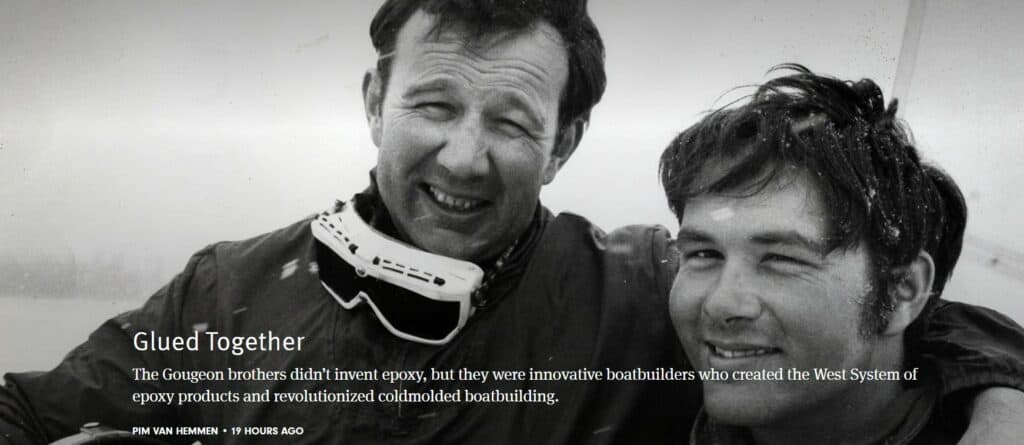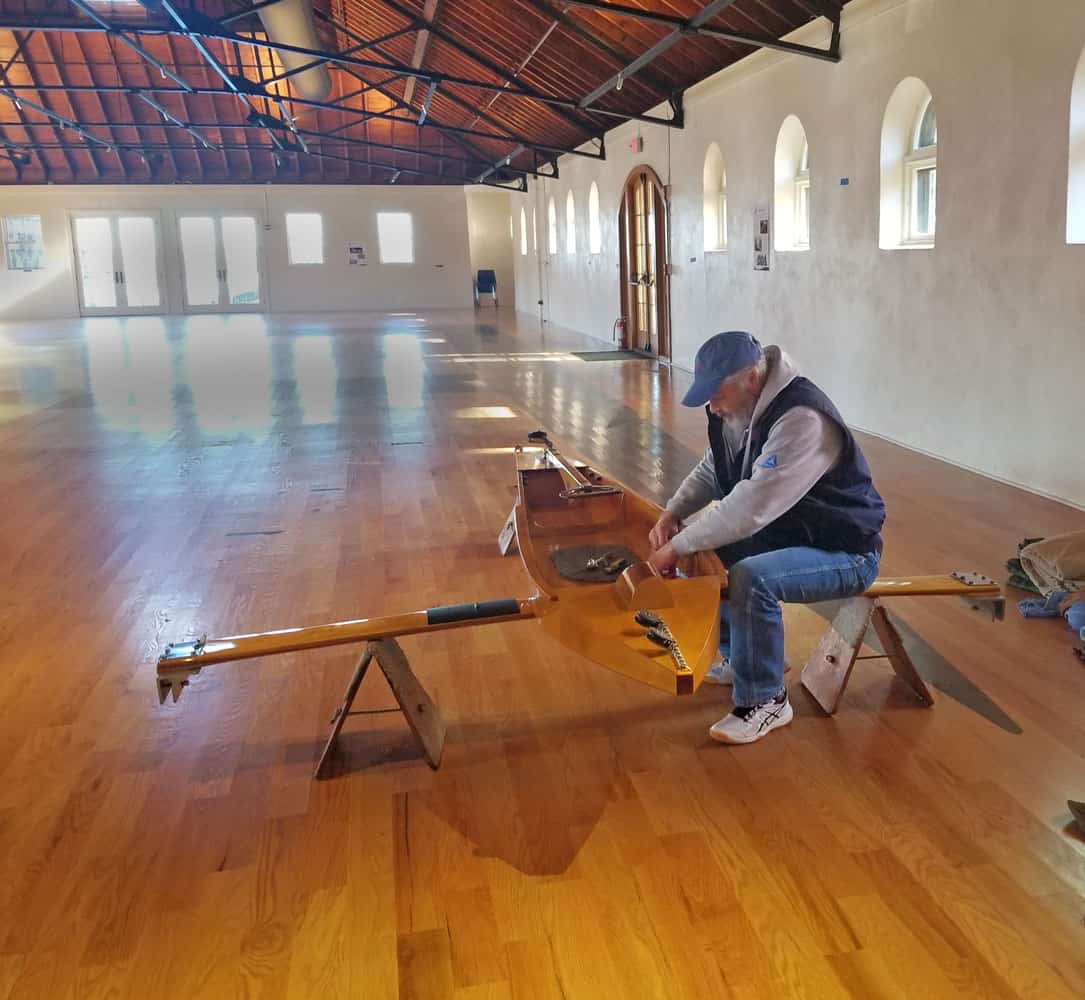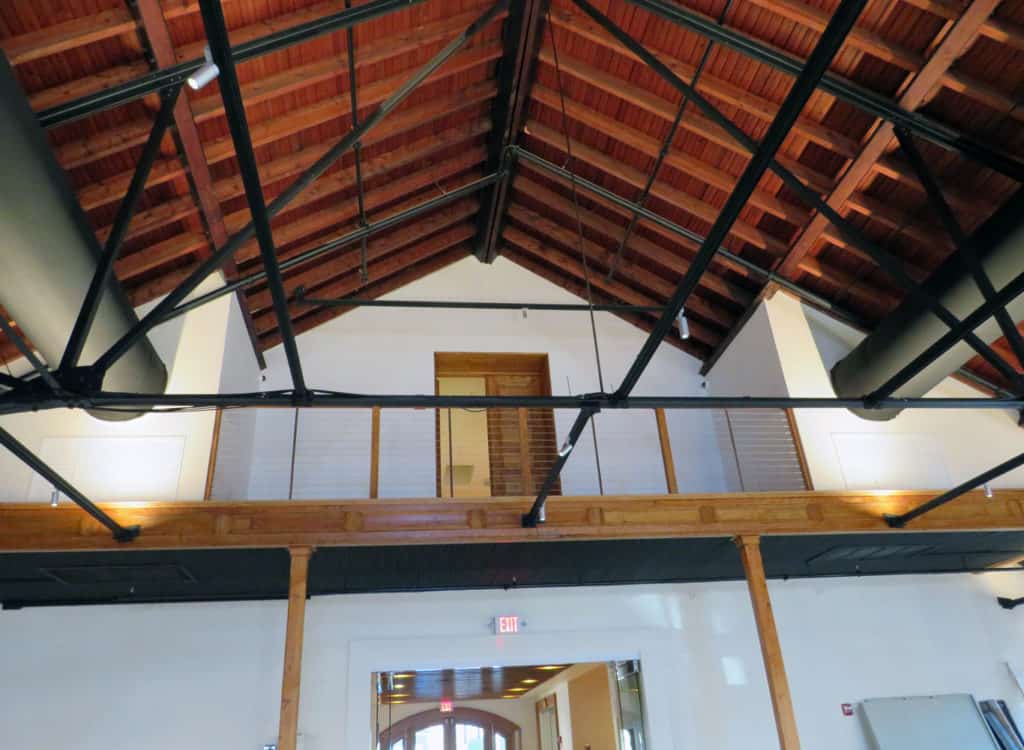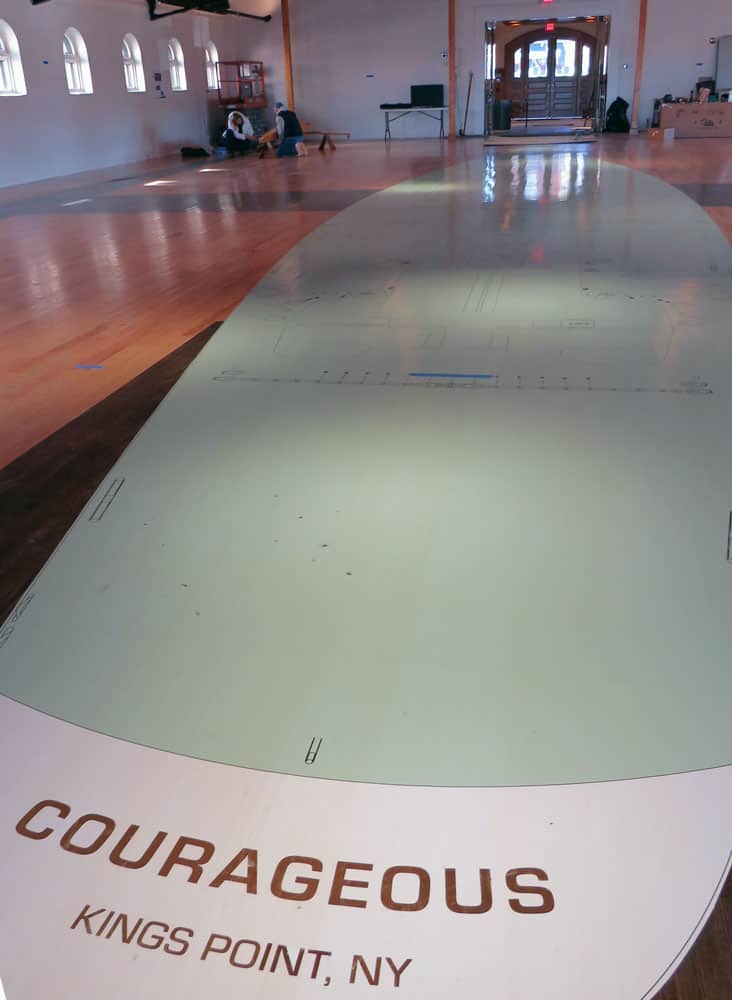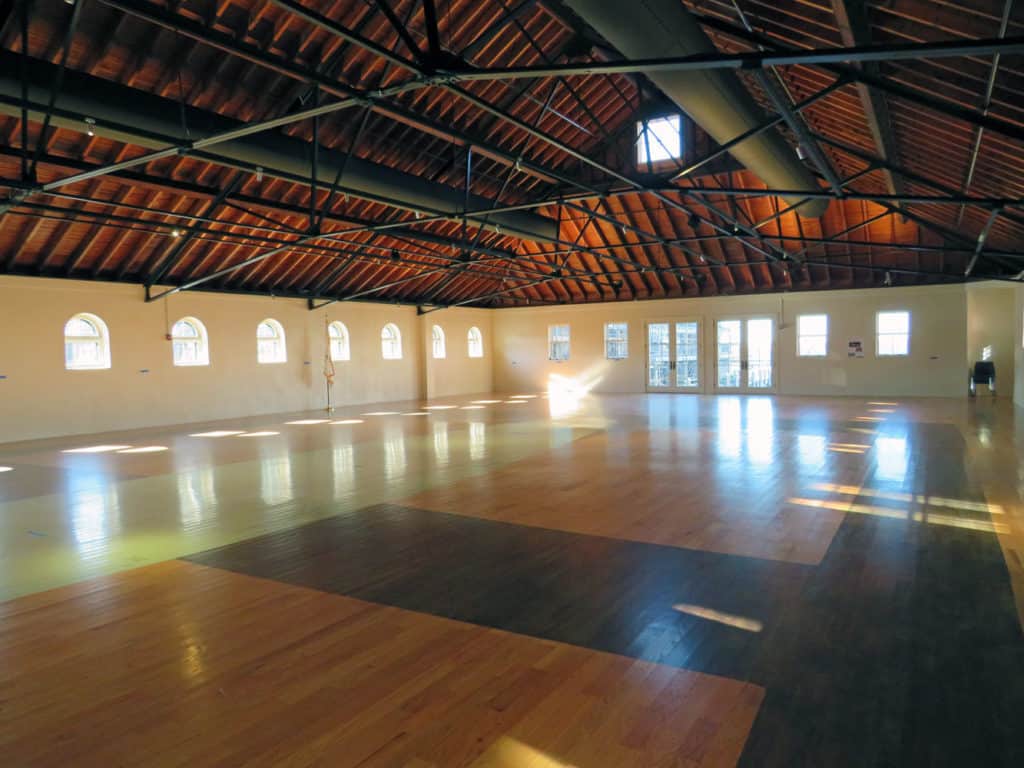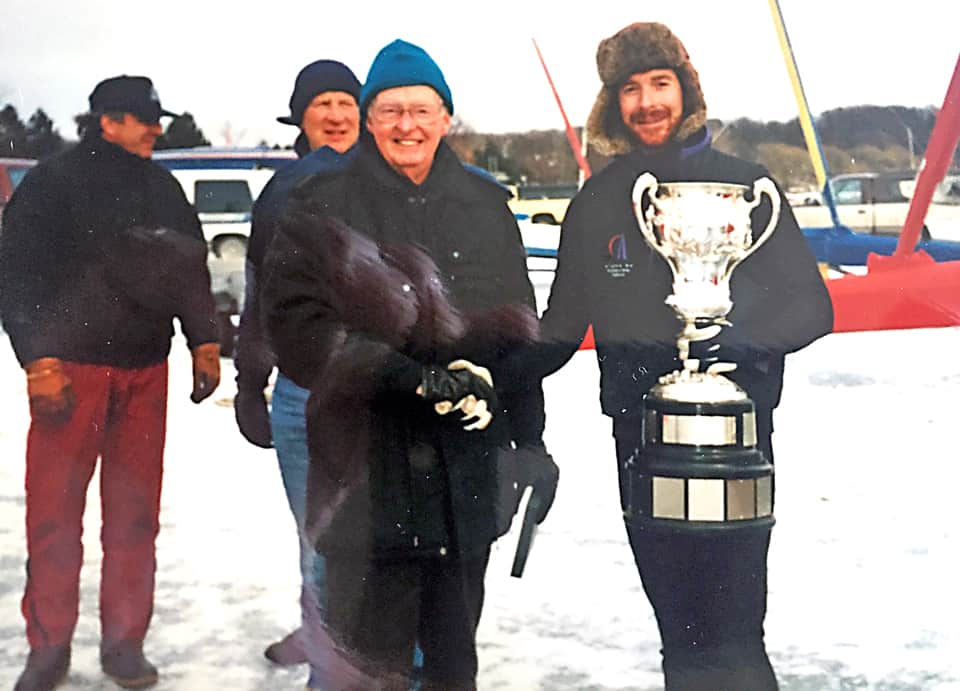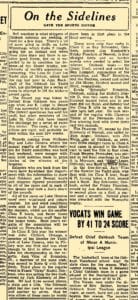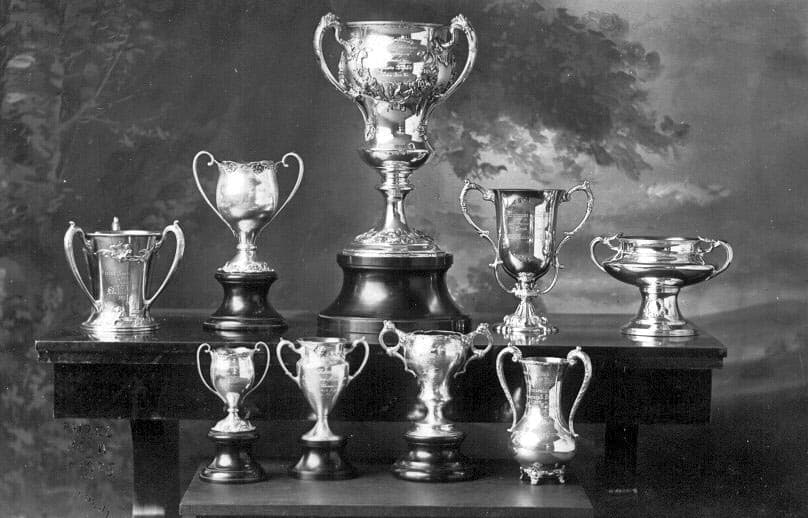by Deb Whitehorse | Mar 19, 2024 | 2023-2024, DN, Home Page

There’s a pattern here. Iceboating has been a source of inspiration for sailing technology innovations. The Harken brothers developed improved blocks for iceboats before expanding into the broader sailing market. Similarly, the Gougeon brothers’ groundbreaking epoxy invention was first put to the test on iceboats, revolutionizing construction techniques and paving the way for advancements in boat building across all sailing disciplines. These instances underscore the significant role that iceboating has played in shaping modern sailing technology and design. One of the best articles ever written about the brothers who invented what holds us together. Read it here.
From Soundings:
Glued Together
The Gougeon brothers didn’t invent epoxy, but they were innovative boatbuilders who created the West System of epoxy products and revolutionized coldmolded boatbuilding.
PIM VAN HEMMEN
Michigan was a hotbed for iceboating and the Gougeons were DN iceboaters. The DN iceboat had been designed for the Detroit News in the 1930s and had quickly become the most popular iceboat in the world. The little racers were fast, but also light, and the high loads they operated under made them prone to operational failures. Broken masts and cracked runner planks were not uncommon. In Meade’s eyes, the DNs were a great test bed for epoxy. Continue reading.
Like this:
Like Loading...
by Deb Whitehorse | Nov 22, 2021 | 2021-2022, DN, Home Page

Visit the musem.Ever since Buddy Melges’ induction in the first class of 2011, ice boaters have numbered among the elite sailors honored by the National Sailing Hall of Fame (NSHOF). Other hard water inductees include Peter Barrett, Olaf & Peter Harken, Jan & Meade Gougeon, Bill Bensten, Herbert Lawrence Stone (who authored books and articles), Bill Mattison, and Jane Pegel.
The sailing community’s full recognition of the sport of ice yachting has culminated with the inclusion of an iceboat in the new NSHOF museum in Newport, Rhode Island.
When visitors enter the impressive interactive exhibition hall, they will notice six boats hanging overhead from the exposed wooden rafters of the historic former armory. One of those six is an iceboat representing our community and those who live to “Think Ice.”
The NSHOF asked Four Lakes Ice Yacht Club Nite sailor Don Sanford (the driving force behind Bill Mattison’s induction), myself, and others for an iceboat. The museum had hoped to hang a Class A Skeeter, but the wide plank would have taken up too much space. They chose one that would fit – the most popular iceboat globally, a DN.
Peter Harken asked that the boat not be a “fixer-upper” but a fully fitted racing boat. The NSHOF accepted Four Lakes Ice Yacht Club member Doug Kolner’s offer to donate his complete modern DN.
The DNs natural wood hull and plank, built in a small garage in Monona, Wisconsin, are true to the roots of the DN’s humble beginnings at the Detroit News hobby shop in the 1930s. Doug built the boat using standard DN plans, and it symbolizes all the iceboat builders who enjoy kicking up some dust and mixing epoxy in their garage shops.
Current members of the NSHOF’s influence is evident in the fact that the boat was built using Gougeon brothers epoxy and Harken brothers fittings technology. Doug recognized NSHOF member Bill Mattison and Green Lake Ice Yacht Club’s Joe Norton as the builders who had influenced his iceboat building know-how.
Like this:
Like Loading...
by Deb Whitehorse | Aug 16, 2021 | 2021-2022, Home Page, NIYA

Read: Oshkosh Ice Boat Club History & 1939 Northwest History by Harry Lund
All-around iceboater Andy Gratton let me borrow a rich archive of iceboat ephemera, photos, and records from Oshkosh, Wisconsin. As anyone who researches history can tell you, the information in libraries like this is filled with rabbit holes that lead you to unforeseen places, always different than what you originally intended.

1930 Oshkosh Ice Yacht Club Letterhead Logo
A report written in 1939 by Harry Lund about the history of the Oshkosh Ice Yacht Club led me to the 1940 Northwest regatta. The regatta was sailed on Geneva Lake in Lake Geneva, WI. It was the first time a Class A Skeeter, Jack Vilas in SUSIE Q, won the ten-lap Northwest “Free For All” race, where the winner is awarded one of the most beautiful trophies in our sport.

1940 Oshkosh Newspaper Northwest Report
The Northwest began in 1913, and the Free For All was the last race of the regatta to compare the speeds of the different classes of stern-steerers. The top two finishers in Class A, B, C, and D stern-steerers were eligible to race for the trophy. 1933 marked the first time the Skeeter class competed in the Northwest, and it only took them seven years to take the Free For All trophy from the stern-steerer class. The Skeeter class has continued their dominance of that race to the present day; Minnesota’s John Dennis is the current titleholder. Thinking about that day in 1940 when Jack Vilas in SUSIE Q became the first bow-steering boat to take home the big cup reminded me of National Sailing Hall of Fame member Jan Gougeon.
Back on Lake Geneva in 1981, Jan gamely lined up his DN with the Class A Skeeters of Four Lakes Ice Yacht Club’s Paul Krueger and Bill Mattison for the ten-lap finale. “It was a scary situation for Bill and me,” Paul recalled. “Jan didn’t realize how fast Bill and I were making the mark. To avoid him, I had to hit the mark, and Bill went to the outside.” From then on, DN sailors who qualified and wanted to compete in the race were allowed to borrow a Class A Skeeter. Jan’s good friend, Ron Sherry, won the 1997 race in a Class A Skeeter he borrowed from 4LIYC’s Bob Kau. (Interesting how Lake Geneva is where Northwest Free-For-All History has been made in 1940, 1981, and 1997!) Ron’s account of that race is a classic story, worthy of another good future post.

The trophies of the Northwest Regatta in 1913. Note the biggest of them all, the Free-For-All trophy
Like this:
Like Loading...
by Deb Whitehorse | Aug 15, 2019 | 2019-2020, Home Page

“The design, construction, and handling of an ice boat is an art rather than an exact science.” Herbert L. Stone
Yachting Magazine editor Herbert L Stone, editor of the first ice sailing book in the United States, is being inducted into the National Sailing Hall of Fame. Stone edited the book “Ice Boating” in 1913 and also wrote the forward to “Wings On the Ice” (published in 1938), one of the best books on the subject ever written.
I can find no evidence that Stone ever owned an iceboat but he had a tremendous influence on the sport by helping to popularizing it through articles in Yachting Magazine. Stone played a big part in reviving the Ice Yacht Challenge Pennant (IYCP) when he encouraged the IYCP trustees of the New Hamburgh Ice Yacht Club to pass on the trusteeship to the Eastern Ice Yachting Association.
Read Ray Ruge’s 1950 article about the revival of the IYCP published in Yachting World here.
Stone’s forward in “Wings On the Ice”, written 81 years ago, still rings true today.
Perhaps one of the chief charms of ice boating is the fact that the implements with which the sport is played, just as in the case of sailing yachts, have not been reduced to a fixed, static quantity. The design, construction, and handling of an ice boat is an art rather than an exact science. There is still room for the play of new ideas, for the expression of individual talent, for the exercise of skill, knowledge, and ingenuity.
Herbert L. Stone
Excerpt of forward to Winds on The Ice, Frederic M. Gardiner
Other ice sailors who have been inducted into the NSHOF are: Peter Barrett, Bill Bentsen,Jan Gougeon, Meade Gougeon, Olaf Harken, Peter Harken, and Buddy Melges
Like this:
Like Loading...
by Deb Whitehorse | Aug 6, 2019 | 2019-2020, Home Page

Doing what they loved, brothers Jan and Meade Gougeon during a day of ice sailing.
The moon walk wasn’t the only technological accomplishment in 1969, it was 50 years ago when two brothers in Michigan figured out a better way to build iceboats and developed two-part epoxy. I remember the transition from Weldwood to WEST SYSTEMS epoxy. The excess Weldwood would form hard amber droplets under my dad’s long iceboat building bench. As a kid, they were kind of fun to play with until one day, those little pieces were gone having been replaced by two-part epoxy that didn’t drip. “Gougeon” is used in every class of iceboat build – from the biggest stern-steerers to youth Ice Optimists.
Read more about the 50th anniversary celebration over at the IDNIYRA website.
Like this:
Like Loading...
